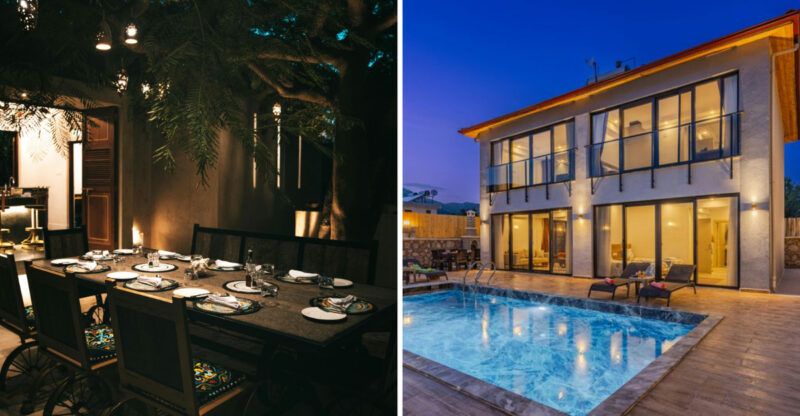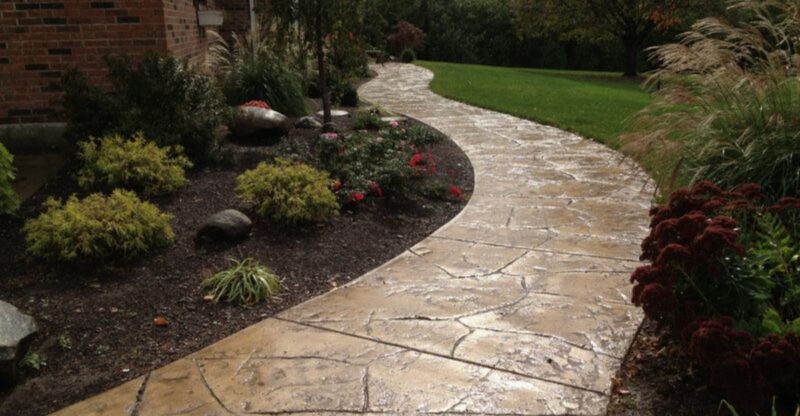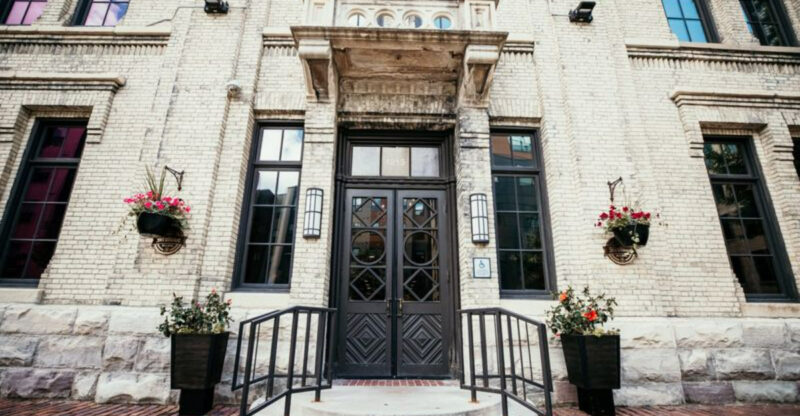13 Timeless Facade Updates From Historic Boston Townhouses To Consider
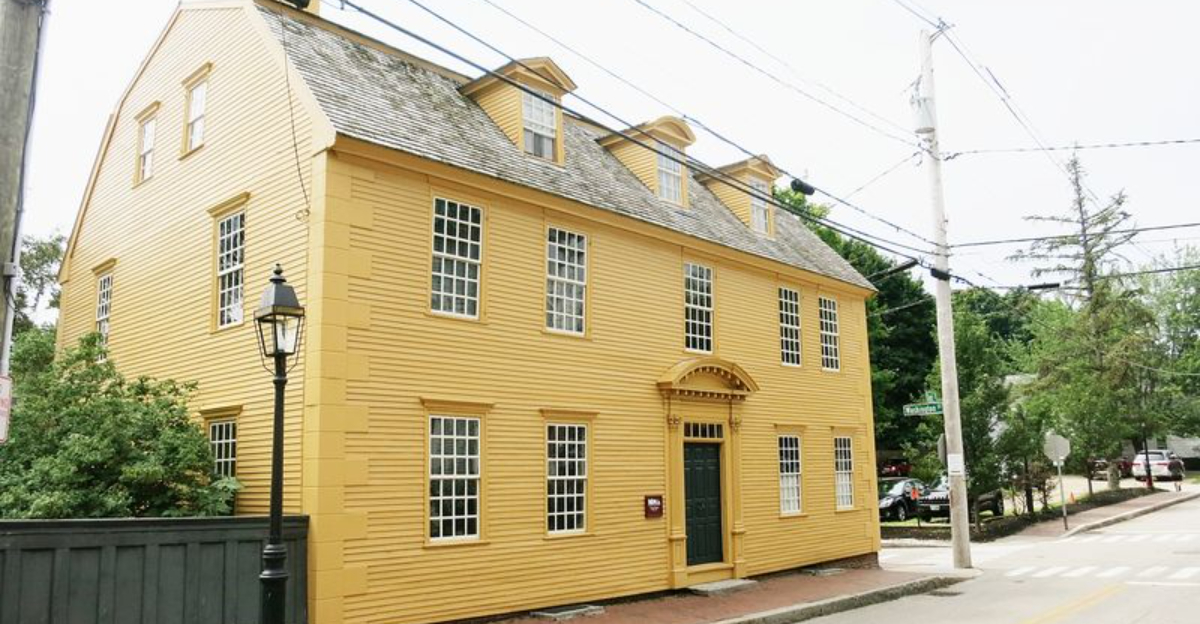
Walking through Beacon Hill or Back Bay, you can’t help but admire the timeless elegance of Boston’s historic townhouses.
These architectural gems showcase facade elements that have stood the test of time, combining beauty with function.
I’ve gathered inspiration from these classic Boston homes to help you add character and curb appeal to your own house with these 13 timeless facade updates.
1. Classic Brick Repointing
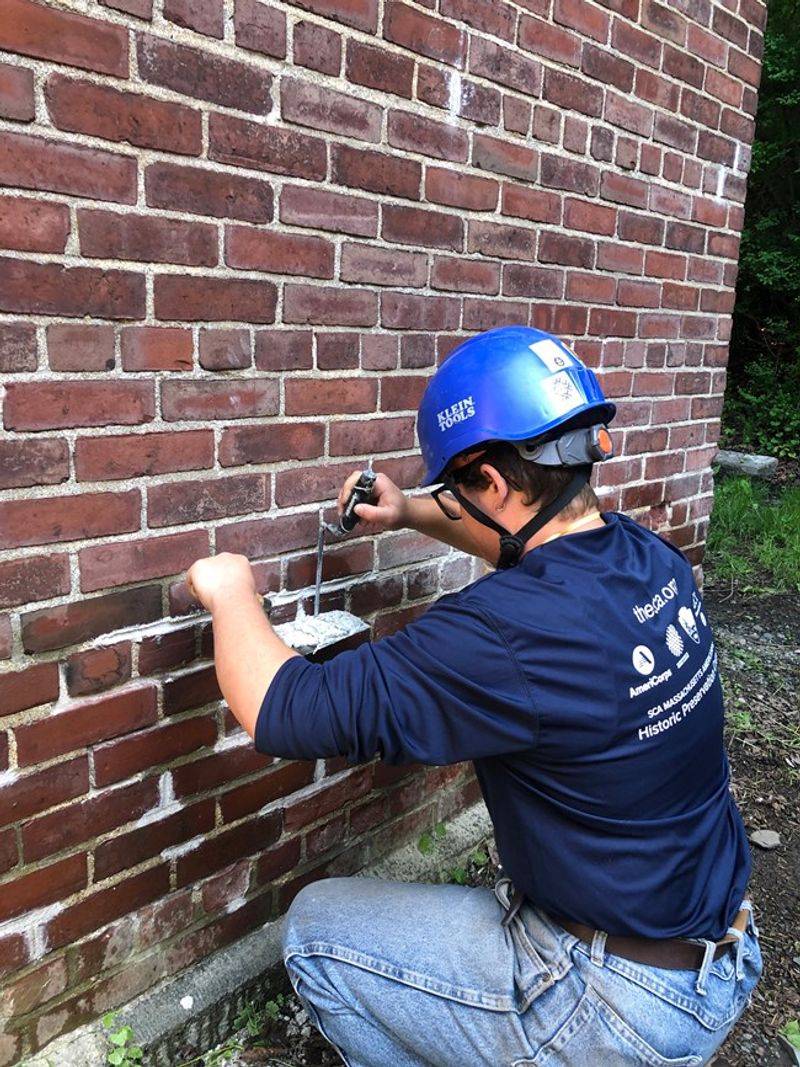
Nothing says “Boston townhouse” quite like meticulously maintained brick facades. Over time, mortar between bricks deteriorates, causing structural issues and water damage. I discovered that professional repointing not only prevents these problems but also transforms the entire look of a home.
The fresh mortar lines create crisp, clean definition that makes the brickwork pop. Many Beacon Hill homeowners opt for historically accurate lime-based mortar rather than modern cement, which allows the brick to expand and contract naturally with temperature changes.
This authentic approach costs more initially but extends the life of your masonry by decades while preserving that coveted historic character.
2. Black-Painted Front Doors
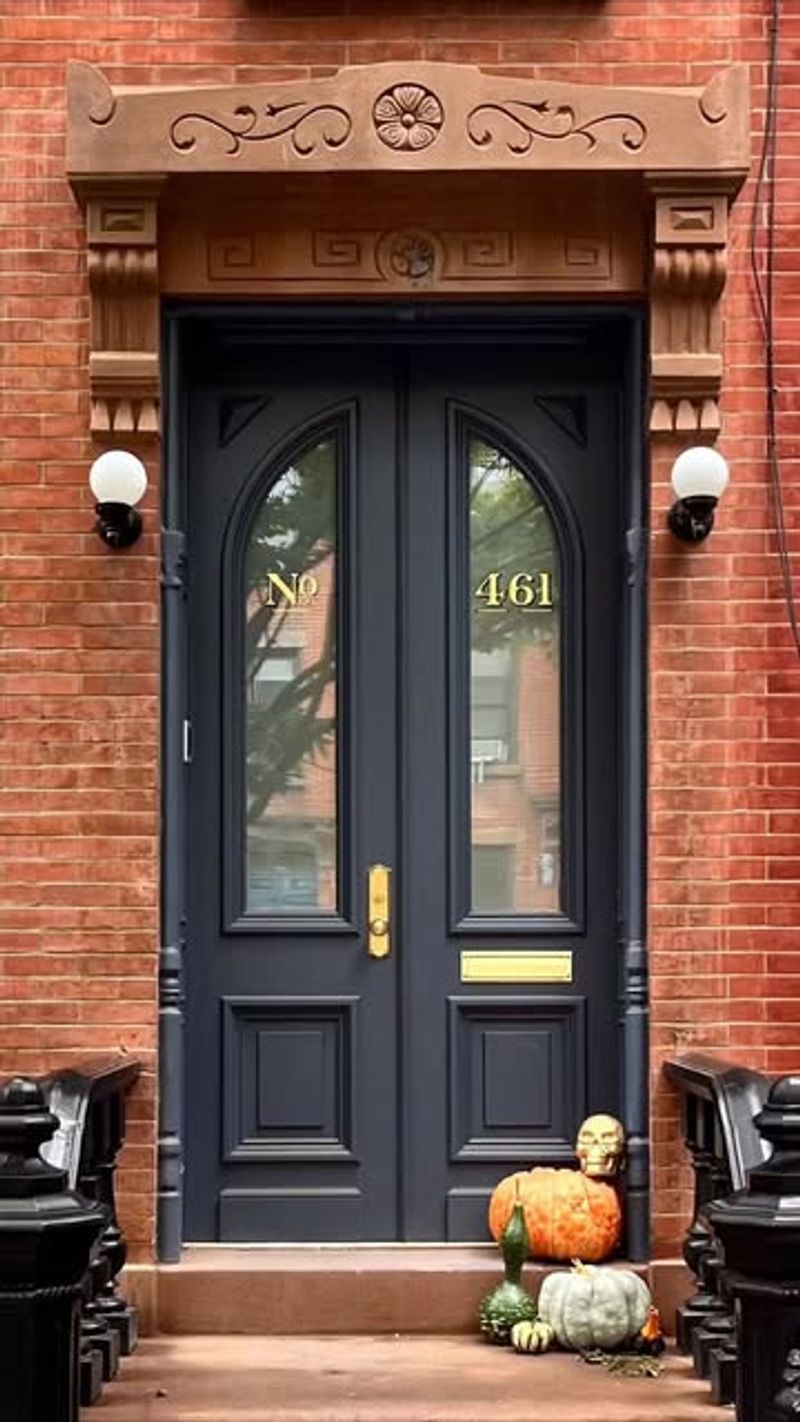
Black doors have become the signature statement piece on Boston’s most elegant townhouses. The glossy finish creates a striking contrast against brick, stone, or clapboard exteriors, instantly elevating your home’s curb appeal.
When I painted my door, I learned that preparation is everything. Proper sanding, priming, and using high-quality exterior paint meant my door has withstood harsh New England winters without peeling or fading. For authentic Boston charm, pair your black door with polished brass hardware and a traditional door knocker.
This timeless combination works equally well on Federal, Victorian, and Colonial style homes, creating that perfect balance of sophistication and warmth that welcomes visitors.
3. Wrought-Iron Railings
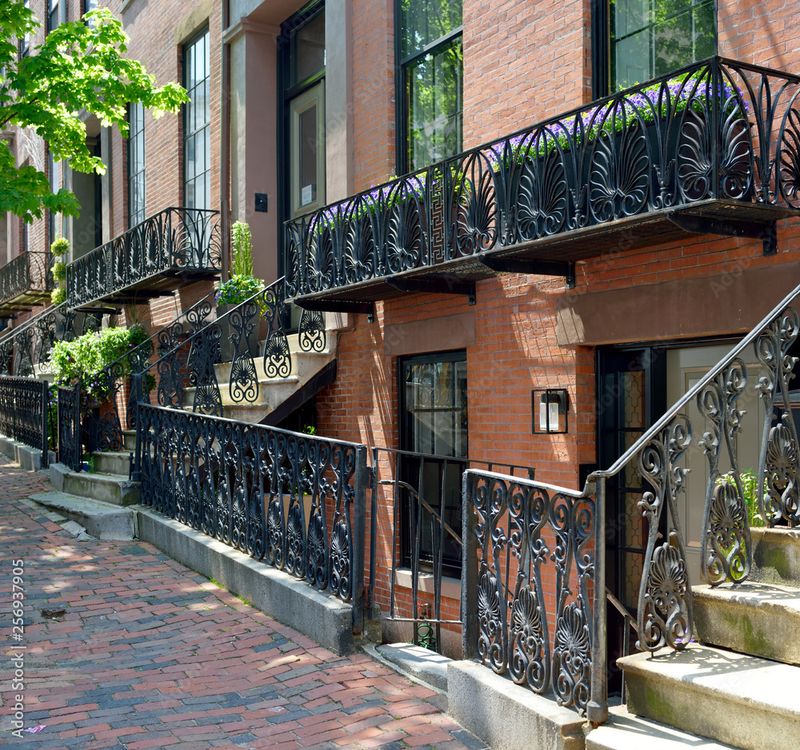
If you’ve strolled through Beacon Hill, you’ve admired the intricate wrought-iron railings adorning stoops and balconies. These architectural details add both safety and sophistication to any home exterior.
The beauty of wrought iron lies in its versatility from simple vertical balusters to elaborate scrollwork patterns that tell a story. I was surprised to learn that many historic Boston railings were actually manufactured in local foundries, each with signature design elements.
Maintaining these beauties requires regular rust inspection and touch-up painting. For modern homes, powder-coated aluminum alternatives provide a similar look with less maintenance, though purists insist nothing matches the character and handcrafted quality of true wrought iron.
4. Traditional Gas Lanterns
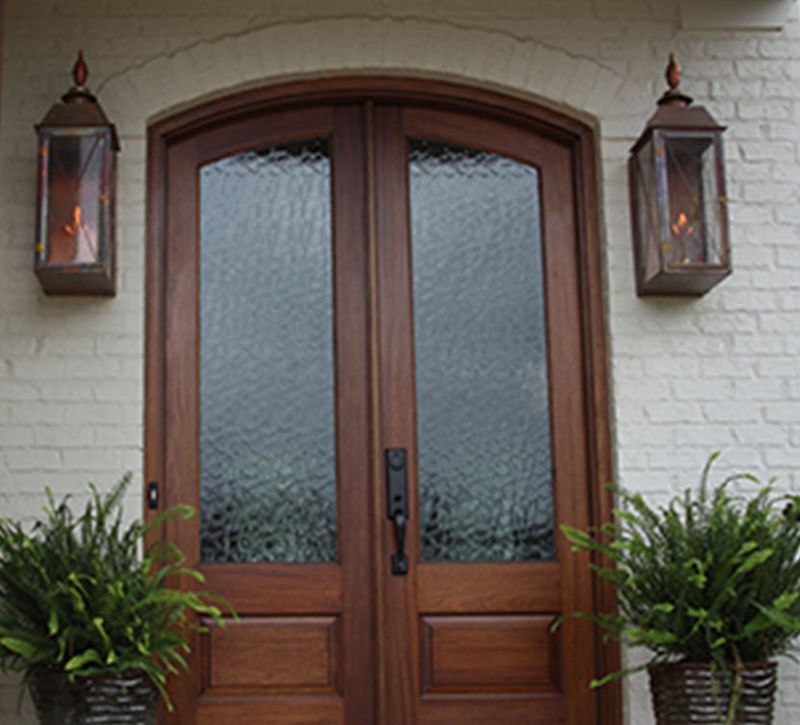
Gas lanterns flicker with warm, golden light beside the entryways of Boston’s most distinguished addresses. Unlike harsh electric fixtures, these lamps cast a soft, dancing glow that creates an instantly welcoming atmosphere.
Modern versions come with convenient automatic ignition systems and can be connected to your home’s natural gas line. I installed mine last fall and was amazed at how this single element transformed my entire facade. The Charleston-style copper lantern proves most popular in Boston, developing a beautiful green patina over time.
For those concerned about energy use, electric fixtures designed to mimic gas flames offer a convincing alternative while saving on utility bills – though nothing quite matches the romance of real flickering flames.
5. Symmetrical Window Shutters
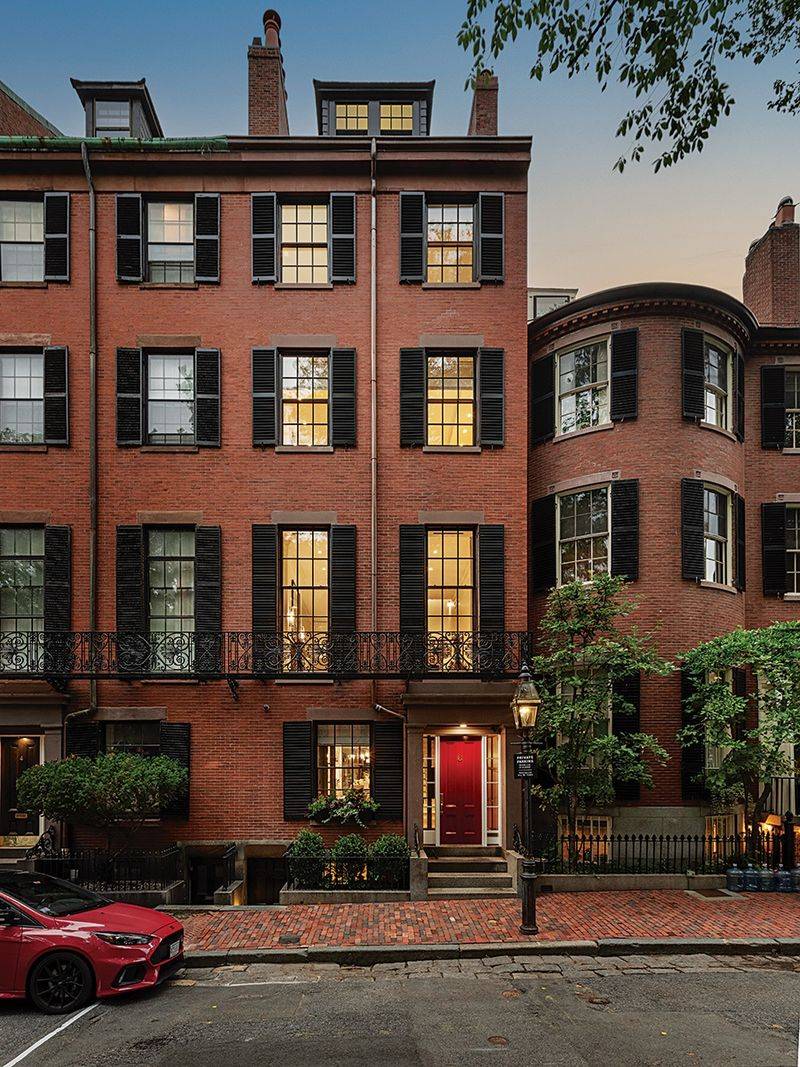
Historically accurate shutters transform ordinary windows into architectural statements. In Boston’s finest townhouses, these aren’t just decorative – they’re properly sized and mounted to actually close over windows, just as they did centuries ago.
Wood remains the material of choice for authentic charm, though modern composite alternatives resist rot while mimicking the look of painted wood. I recommend louvered designs for most Boston homes, which originally provided ventilation while keeping out rain. The secret to shutters that truly enhance your facade? Hardware matters!
Authentic hinges and holdbacks (called “shutter dogs”) make all the difference between authentic restoration and cheap imitation. And while black remains classic, historic paint analysis shows that deep greens, blues, and even rich burgundies were common on period Boston homes.
6. Dentil Crown Molding
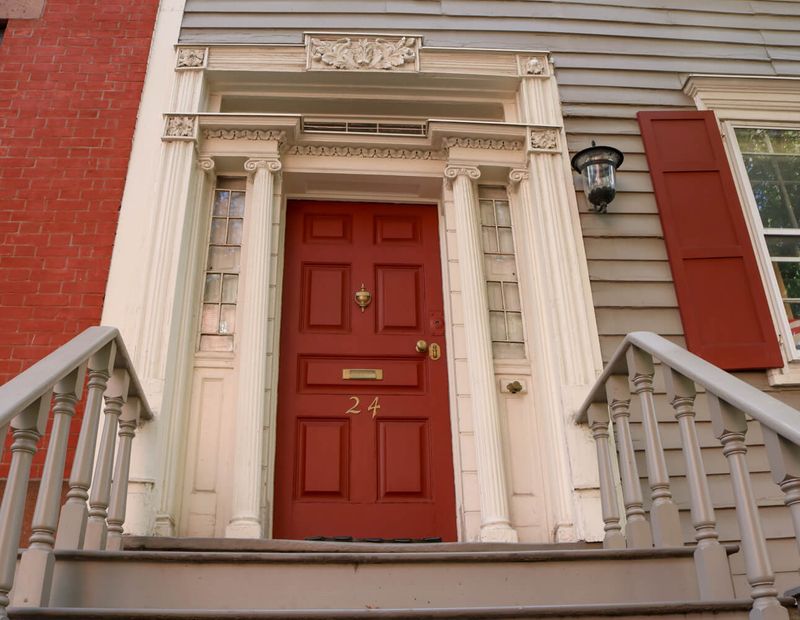
Those tiny tooth-like blocks marching along the rooflines of Boston’s Federal-style townhouses? That’s dentil molding, and it adds extraordinary sophistication to any facade. Historically carved from wood, today’s versions come in weather-resistant composites that install more easily and resist rot.
My contractor installed mine using pre-fabricated sections, saving considerable labor costs while achieving an authentic look. This architectural detail works wonderfully as a transition between siding and roofline or above windows and doors.
For maximum impact, paint dentil molding in a contrasting color to your main facade traditionally white against darker siding. This creates shadow lines that highlight the detail and add visual interest even from a distance.
7. Granite Front Steps
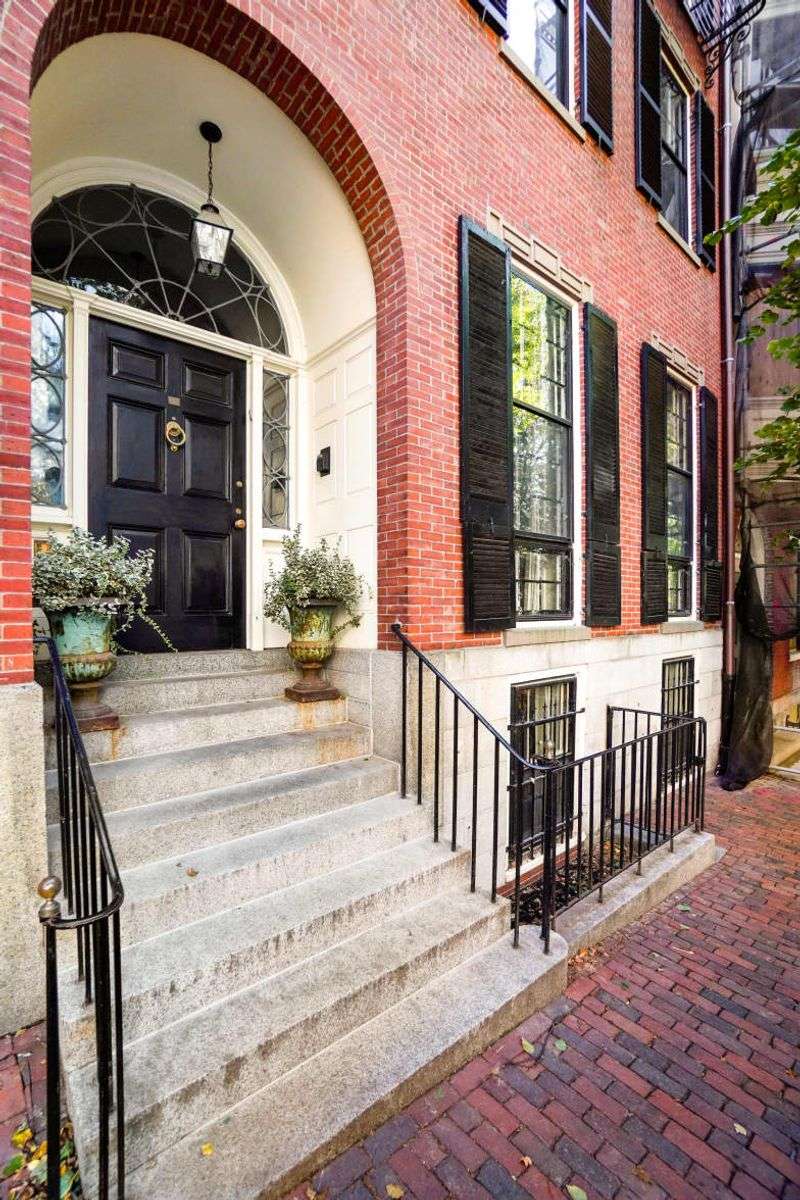
Granite steps have welcomed visitors to Boston’s finest homes for centuries, developing a subtle patina that only improves with age. These substantial stone slabs communicate permanence and quality unlike any other material.
Quarried from New England’s abundant stone resources, traditional granite steps feature a hammered or thermal finish for slip resistance. I was initially concerned about cost, but discovered that quality granite outlasts concrete by decades, making it surprisingly economical long-term. For authentic Boston character, look for Quincy granite with its distinctive gray color and subtle flecks.
Some historic homes feature cheek walls (the sides of the staircase) in matching granite or brick, often topped with limestone caps. This substantial entrance feature instantly elevates your home’s curb appeal while honoring New England architectural traditions.
8. Arched Transom Windows
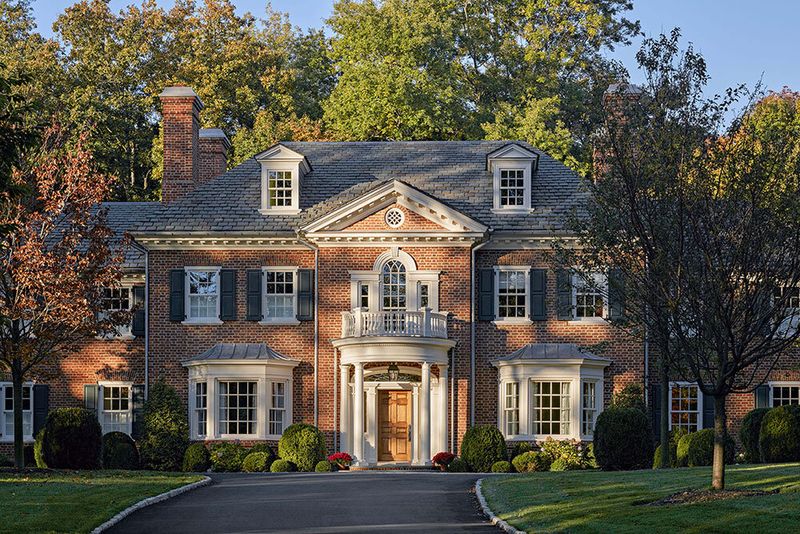
Perched gracefully above Boston’s most distinguished doorways, arched transom windows allow natural light to flood entrance halls while creating architectural interest. These semicircular or fan-shaped windows originated as practical solutions before electric lighting but remain as decorative signatures.
Authentic restorations feature divided lights with true muntins rather than snap-in grids. The classic “Federal sunburst” pattern radiates wooden spokes from a central point, though simpler designs with just a few divisions work beautifully on more modest homes.
My favorite aspect of these windows is how they transform throughout the day catching morning light differently than afternoon sun, creating ever-changing patterns inside. For privacy with historic charm, consider restoration glass with slight imperfections that diffuse light while preventing clear views inside.
9. Historic Brass Hardware
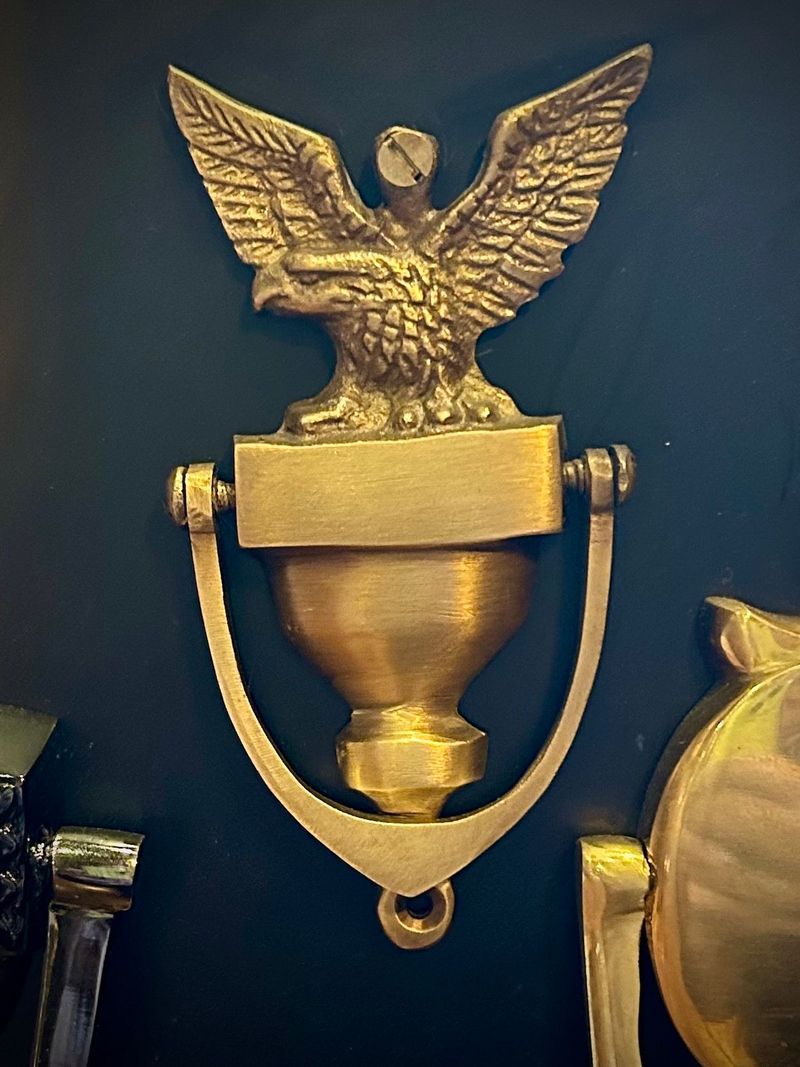
Hand-polished brass door hardware gleams against freshly painted doors throughout Boston’s historic districts. These tactile elements connect us directly to history – imagine how many hands have turned these same latches over centuries!
Beyond basic doorknobs, complete the look with matching mail slots, door knockers, and street numbers. I found that unlacquered brass develops a living patina over time, deepening in color where it’s frequently touched while maintaining its golden glow in protected areas. For maximum authenticity, seek out reproduction hardware based on original Boston designs.
The Federal-style eagle knocker remains particularly iconic, while the simple oval door plate with separate knob and keyhole epitomizes Georgian restraint. These small details make dramatic differences in your home’s historical accuracy and overall impression.
10. Window Flower Boxes
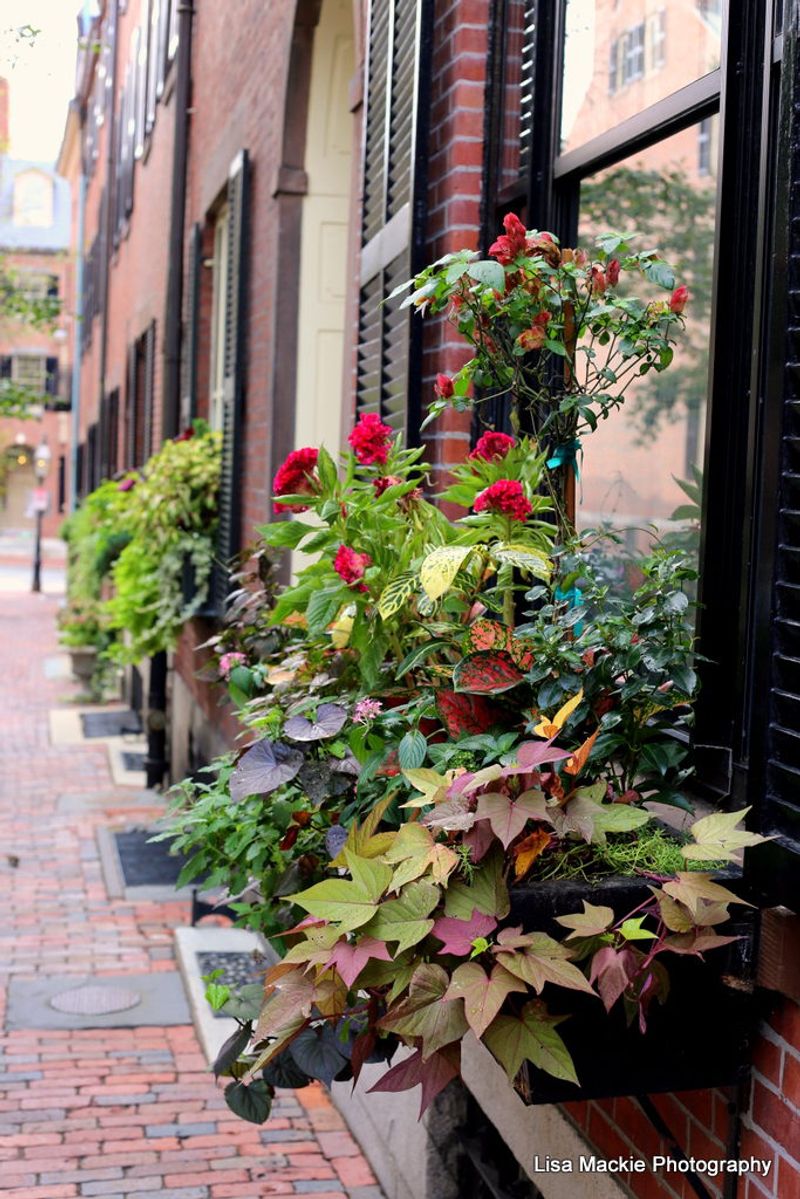
Charming window boxes burst with seasonal color along Beacon Hill’s most photographed streets. These simple additions bring living texture to otherwise formal facades, softening brick and stone with natural elements.
Cedar and redwood boxes naturally resist rot, though copper-lined wooden boxes represent the gold standard for longevity. I installed self-watering reservoirs in mine, which solved the challenge of maintaining lush displays during summer heat waves. For year-round appeal, consider evergreen foundations like boxwood or ivy, supplemented with seasonal flowers.
Boston’s traditional spring displays feature red geraniums and cascading ivy, while winter arrangements incorporate evergreen boughs, birch branches, and winterberries. The key is choosing plants appropriate to your window’s sun exposure a mistake I learned through one sadly wilted display!
11. Slate Roof Repairs
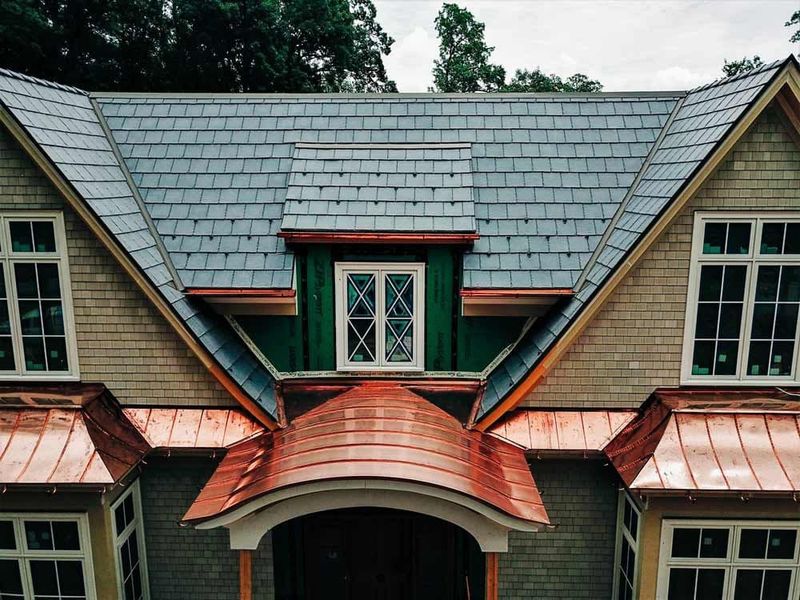
From Beacon Hill to Back Bay, Boston’s skyline is defined by the subtle blue-gray shimmer of slate roofs. These remarkable natural stone tiles have protected the city’s finest homes for centuries, often outlasting several generations of owners.
Maintaining rather than replacing these architectural treasures preserves both history and value. I learned that individual damaged slates can be carefully removed and replaced, extending roof life indefinitely with proper care. When selecting replacement slates, matching the original quarry source ensures consistent color and performance.
Vermont, Virginia, and Maine slates each have distinctive characteristics in color, texture, and weathering patterns. For homes without existing slate, new architectural-grade slate provides the same beauty and longevity an investment that dramatically enhances curb appeal while potentially outlasting the mortgage!
12. Period-Appropriate Paint Colors
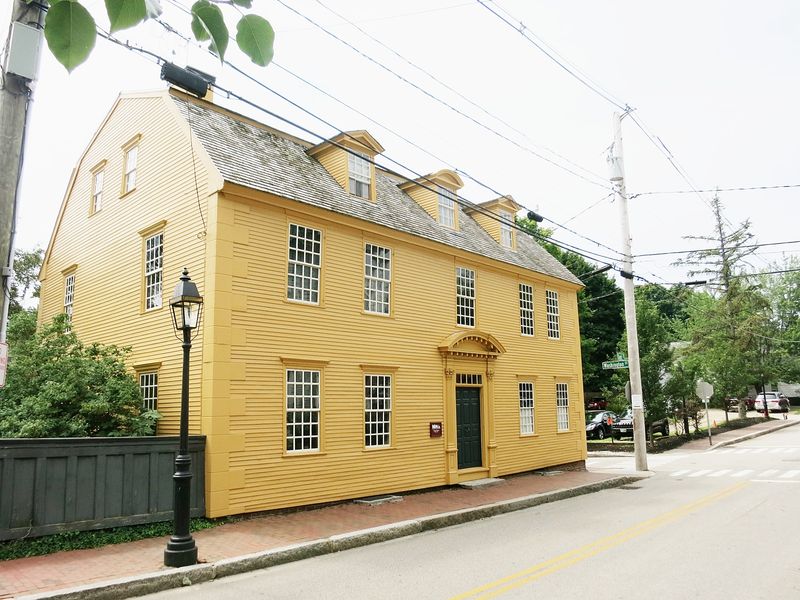
Authentic color schemes transform Boston townhouses from ordinary to extraordinary. Historical research reveals that colonial-era homes weren’t always the white-with-black-shutters we imagine many featured rich earth tones and unexpected accent colors.
For Federal-style homes, soft creams, ochres, and sage greens dominated, while Victorian-era townhouses embraced deeper burgundies, olives, and slate blues. I spent hours researching before selecting my historically accurate palette, but the results were worth every minute. Many paint companies now offer historically researched collections specific to New England architecture.
For truly authentic results, consider traditional linseed oil-based paints, which develop a subtle patina impossible to achieve with modern acrylics. Remember that trim was often painted in contrasting colors to highlight architectural details sometimes in surprising combinations that feel remarkably contemporary today.
13. Ornamental Cornices
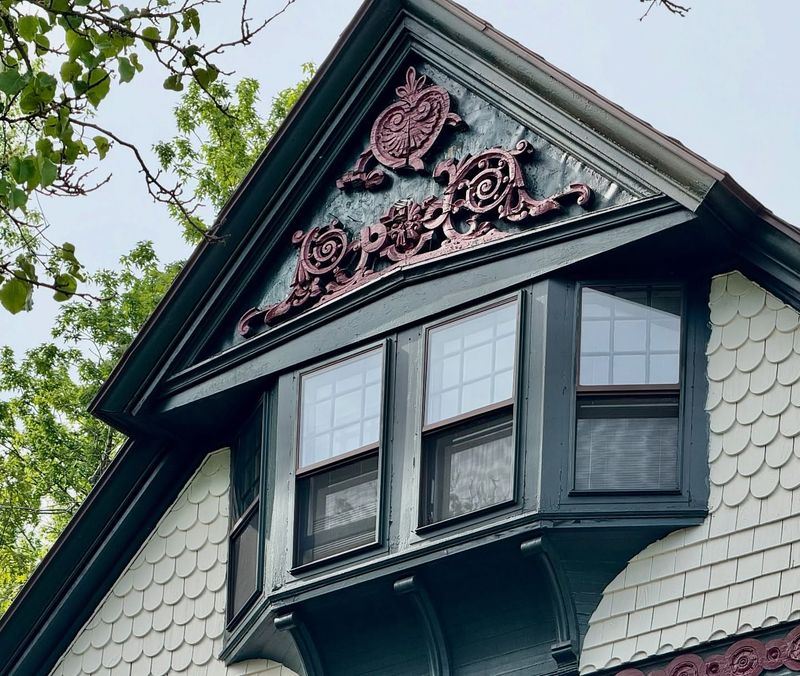
Crowning Boston’s most distinguished townhouses, ornamental cornices create dramatic shadows while protecting facades from water damage.
These decorative elements mark the transition between wall and roof, often incorporating elaborate patterns that identify architectural periods. Greek Revival homes feature bold, geometric designs, while Victorian-era buildings showcase intricate scrollwork and brackets. My restoration contractor explained that these weren’t just decorative they direct rainwater away from walls while expressing the homeowner’s taste and status.
Today’s restoration options include fiber-reinforced polymer replicas that capture every detail of the originals while weighing less and resisting rot. For simpler homes, even basic wooden cornices with crown molding add architectural interest and historical accuracy. This often-overlooked element dramatically enhances your home’s silhouette and street presence while connecting it to Boston’s architectural heritage.


